- Suckers
- Suckers with simple sucker aperatures (drawing on right).
- Eyes
- Large.
- Funnel
- Funnel organ V-shaped.
- Fins
- Anterior lobes apparently absent in preserved specimens.
- Gill
- Gills with 7 (rarely 6) lamellae.
- Lamellae 3 and 4 with common afferent vessel at base.
- Optic lobes and nerves
- Optic lobe kidney-shaped.
- 3-5 optic nerve bundles pass through/by white body.
- Digestive system
- Radula absent.
- Digestive gland bilobate.
- One pair of large salivary glands on buccal mass.
- Intestine about twice esophagus length.
- Beaks
- Upper beak without teeth; with weak lateral wall fold.
- Lower beak with two weak lateral wall folds.
- Male reproductive system
- Spermatophore glands complex and accessory-gland complex nearly equal in size.
- Accessory gland 3 dominates accessory-gland complex.
- Penis poorly developed (triangular, lappet-like).
- Female reproductive system
- Large ovarian eggs 7.2 x 4.9 mm.
- Proximal oviduct about 3 times longer than distal oviduct.
- Shell
- Shell solid.
- Saddle with outer surface concave and inner surface convex.
- Fin insertion area marked by 2 well-developed shoulder blades.
- Pigmentation
- Areolar spots on dorsal surfaces of mantle, head and all arm bases; 6-11 spots on head and each arm I, 6-12 spots on head and each arm II, 6-9 spots on each arm III and IV.
- Areolar spots larger and fewer in juveniles.
- Dorsal surfaces red to light purple.
- Margin of eye, outer margins of fins and cirri, pale white.
- Oral surfaces of arms and web darker purplish-red; distal surfaces fade to pink.
- Suckers and sucker aperatures, pale yellow.
- Measurements
Comments
The above description is taken from O'Shea, 1999.


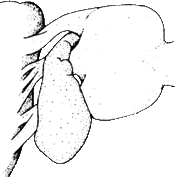
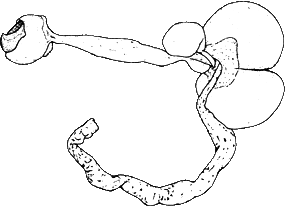

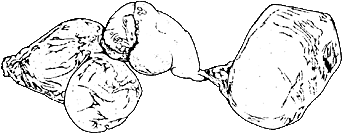
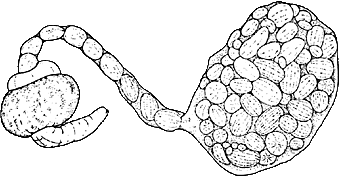
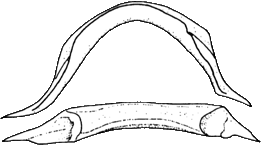



 Go to quick links
Go to quick search
Go to navigation for this section of the ToL site
Go to detailed links for the ToL site
Go to quick links
Go to quick search
Go to navigation for this section of the ToL site
Go to detailed links for the ToL site